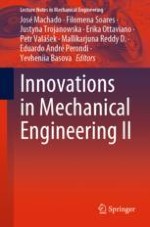This book covers a variety of topics in the field of mechanical engineering, with a special focus on methods and technologies for modeling, simulation, and design of mechanical systems. Based on a set of papers presented at the 2nd International Conference “Innovation in Engineering”, ICIE, held in Minho, Portugal, on June 28–30, 2022, it focuses on innovation in mechanical engineering, spanning from advanced materials and composites, optimization of manufacturing and production processes, and converging issues and technologies in additive manufacturing and industry 4.0. It covers applications in the transport and automotive, and medical and education sector, among others. This book, which belongs to a three-volume set, provides engineering researchers and professionals with extensive and timely information on new technologies and developments in the field of mechanical engineering and materials.
